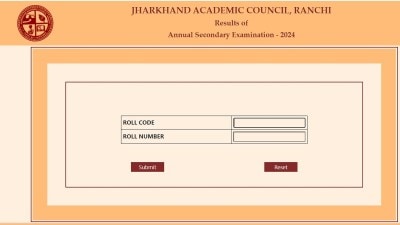- India
- International
Election manifestos have pushed matters of scientific research and policy to margins
As we wait for the results of an acrimonious election, even the significant manifesto announcements seem like a distant memory crowded out by emotive issues and vitriolic speeches. The non-contentious issues related to science and technology are struggling to find a foothold in this narrative.
 Even a cursory analysis reveals a huge gap between these promises and actual delivery. After the 1960s, migration of scientists to the Western countries increased. (Representational image)
Even a cursory analysis reveals a huge gap between these promises and actual delivery. After the 1960s, migration of scientists to the Western countries increased. (Representational image)
Election manifestos have a short shelf-life in public memory. Except for the big-ticket announcements such as NYAY or doubling farmers’ income, political parties are rarely held accountable for the other, often significant, commitments they make in their manifestos. This selective accountability encourages breaching the election promises with impunity, especially in areas such as science and technology (S&T) that remain outside the media limelight. If manifestos ever grapple with issues that have implications beyond the election cycle, it is in these critical areas that determine the nation’s long-term competitiveness. As a marker of India’s technical prowess, S&T issues have been a part of manifestos since many decades, though with an unenviable track record of delivery on promises.
For election manifestos, science is a tool for societal transformation. Few recognise the intrinsic value of the worldview it offers. Even as far back as the 1945-46 elections, the Indian National Congress’s manifesto had stated that “scientific research is a basic and essential activity of the state and should be organised and encouraged on the widest scale”. The Jana Sangh, the ideological precursor of the BJP, declared in its 1951 general election manifesto that their “policy will aim at the provision of facilities for the highest scientific education and research”. Post-independence, such platitudes gave way to specific policy commitments.
The Congress manifesto (1967) focussed on brain-drain and service conditions, recurrent issues that have figured in all the manifestos in subsequent decades. It called for improving the “conditions of work and service as to attract our best men from whichever part of the world they may be working in now … no foreign aid can replace the loss of skills as a result of the drain of some of our ablest students to other countries”. In the first few decades after Independence, self-reliance was another popular manifesto theme across the party lines. In 1977, the Janata Party and CPI manifestos emphasised self-reliance through the application of S&T, while the latter also committed to provisioning more research funds.
Even a cursory analysis reveals a huge gap between these promises and actual delivery. After the 1960s, migration of scientists to the Western countries increased. The Economic Survey (2018) estimates that 9,50,000 India-born scientists and engineers work in the US alone, up by 50 per cent since 2003. This is partly related to the working conditions that have not kept pace with the changing times. Acknowledging this issue, the then prime minister, Manmohan Singh, addressing the Indian Science Congress in 2010, spoke of the need to “liberate Indian science from the shackles and deadweight of bureaucratism and in-house favouritism”. From 2004 onwards, both the BJP and Congress had repeatedly assured more autonomy and less procedural hurdles for the scientific institutions, with little follow-up action. Self-reliance, the dominant development idiom in the last century, has ceased to be a favoured option since the economic reforms of 1991. Over the years, most of the manifestos, with the exception of CPM in 2014, have replaced self-reliance with collaboration and transfer of technology to reap quicker benefits.
By far the most elusive promise is for enhancing the budgetary support for research to 2 per cent of GDP to help maintain India’s competitive edge. For decades, India’s research spending had stagnated at about 0.7 per cent while the global norm is about 2-3 per cent of GDP. Since the 1990s, election manifestos of all the major national parties have responded positively with varying levels of commitments. Outside of the election arena, Atal Bihari Vajpayee and later Manmohan Singh led governments supported this cause, with a rider that the private sector must contribute in equal measure. This election is witnessing a rerun of this old classic: The Congress has renewed this pledge again, while the BJP remains non-committal.

In a rare consensus across the political spectrum, all the manifestos in the last 10 years have supported open-source standards and software to run IT hardware. There are many positives to open-source software, and one of the attractive features is that it comes free of cost. It can potentially save costs associated with software procurement. Both the BJP and CPM have supported it since 2009, while the Congress has joined the bandwagon this year. In 2015, the government adopted a policy framework favouring open-source software. It is a partial success story. In the future, manifestos must focus on its implementation.
In the 2019 manifestos, the yesteryear issues of self-reliance, brain drain and autonomy, even if not entirely resolved, have faded out in favour of a slew of futuristic promises, ranging from harnessing the power of quantum technologies (by the BJP) to setting up a think tank to evaluate medium-to-long term strategic future opportunities and risks (the Congress). In 2014, the BJP committed to establishing an institute for big data and analytics. Five years later, this remains unfulfilled, but found a mention in the BJP and Congress manifestos. Had scientists been consulted, manifestos would have also reflected one of their existential concerns; more budgetary support and timely release of funds for all the research projects and students.
As we wait for the results of an acrimonious election, even the significant manifesto announcements seem like a distant memory crowded out by emotive issues and vitriolic speeches. The non-contentious issues related to science and technology are struggling to find a foothold in this narrative. These need debating space, scrutiny and accountability as well.
This article first appeared in the print edition on May 23, 2019 under the title ‘Short on science’. The author is a professor of physics at the Indian Institute of Science Education and Research, Pune.
EXPRESS OPINION
More Explained
Apr 19: Latest News
- 01
- 02
- 03
- 04
- 05









































